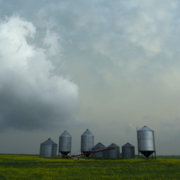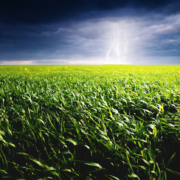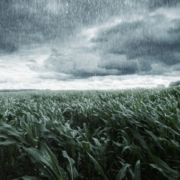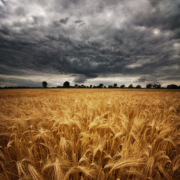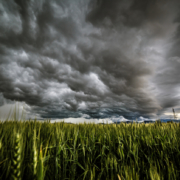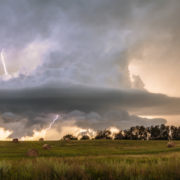Early harvest begins in southern Saskatchewan, Alberta
Producers should leave adequate sample strips for adjusters to assess crop damage as harvest begins in the southern regions of Saskatchewan and Alberta, according to the Canadian Crop Hail Association.
CCHA member companies are investigating more than 646 claims of crop damage from storms that occurred July 10-16
Companies contributing to this report are Rain and Hail Insurance Service, Palliser Insurance, Agriculture Financial Services Corporation and Manitoba Agricultural Services Corporation,
CCHA President Scott McQueen, of Palliser Insurance, said claim activity remains low throughout the western provinces.
“Harvest is starting to roll in some of the southern regions of Saskatchewan and Alberta,” he said. “We ask producers to leave strips if adjusters haven’t been out to assess their damage. All companies are getting to claims on a timely matter so new storms won’t push adjusters behind.”
High levels of heat and low moisture continue to burden crops in many areas across the prairies, said Tyson Ryhorchuk of Rain and Hail Insurance Service.
Here’s a look at storm damage across the region.
Alberta
Crops damaged: Canola, Barley, Corn, Wheat, Peas, Alfalfa, Barley, Beans, Corn, Fababean, Flax, Grass Seed, Lentils, Mixed Grain, Mustard, Oats, Potatoes, Rye, Triticale, Wheat
Communities impacted include: Delia, Barrhead, Ft.McLeod, Wetaskiwin, Stavely, Daysland, Stettler, Magrath, Turin, Rolling Hills, Scandia, Indus, Dalemead, Mossleigh, Carstairs, Didsbury, Dickson, Spruceview, Hanna, Rowley, Trochu, Big Valley, Gadsby, Donalda, Heisler, Daysland, Hay Lakes, Viking, Warburg, Tofield, St. Paul, Mallaig, Therien, Glendon, Radway, Sandy Beach, Barrhead, Thunder Lake, Edson, Sexsmith, Little Smoky, McLennan, Girouxville, Rycroft, Falher, Nampa, Worsley
Saskatchewan
Crops damaged: Canola, Peas, Durum
Communities impacted include: Golden Prairie, Fox Valley, Cabri, Canora, Kinistino, Rosthern, Nipwain
Manitoba
Crops damaged: Canola, Grain Corn, Sunflowers, Soybeans, Red Spring, Wheat, Field Peas, Barley
Communities impacted include: Steinbach, Mitchell, Sundown, St Claude, Virden, Roblin

